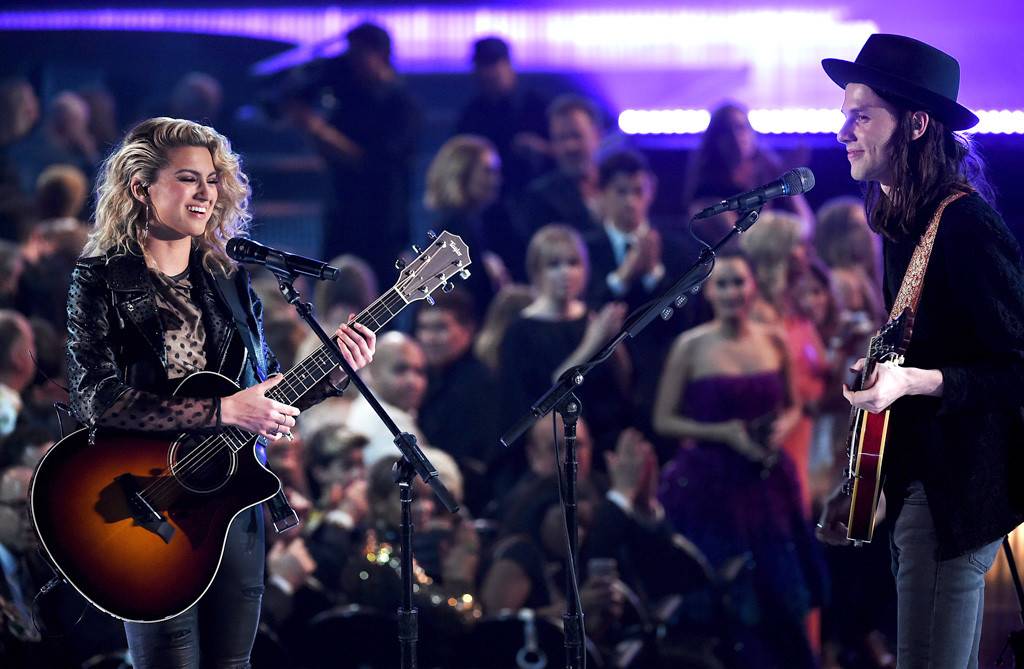Imagine turning on the radio to hear a new song. As the music swells, the melody reveals another artist on the track, and you consider the value of this addition. In the profit-motivated, mainstream music industry, interpersonal collaboration is fairly common. Yet when the persons involved are carefully groomed prize winners, collaboration is a high stakes business exchange. The essence of artistic collaboration– natural and thought-out pairing– is lost to profit-hungry executives and careful algorithms. Of course, collaboration inherently interests a larger group of listeners. However, the best partnerships create beautiful music that is therefore appealing, rather than just radio-friendly soundwaves with no greater significance.
Mainstream music exploits certain tactics to reach widespread popularity. By trading the standard bridge of a pop song for a rap interlude, singers elevate the “cool factor” of their music, entering another elite demographic. In the right moments, rap provides a contrast to an otherwise monotonous pop song. Taylor Swift’s “Bad Blood” is transformed by Kendrick Lamar’s additions to each verse. While the song was initially Swift’s independent piece, a separate version featuring Lamar boosted audience support to heights unknown by the original. The addition was a unique form of collaboration that proved the potential of the song and the power Lamar could have over its theme. This collaboration felt purposeful, and while not necessarily expected, it was certainly thought-out. With a single, watered-down verse, though, songwriters disregard the command of rap music. After all, if the a song can stand on its own without an interlude, it clearly does not need to be collaborative.
This undefined and unnecessary collaboration originates from the greater issue of mass appeal. In the mainstream industry, music is produced for profit, and adding one rap verse exposes a song to two pools of revenue. Still, some of the most popular collaborations are between artists of the same genre. Singers frequently harmonize on their peers’ songs, but this decision provides less contrast to the style and intent of the main singer, and these moments feel like additions rather than partnerships. In turn, neither fanbase is completely satisfied, because the song isn’t the artists’ typical work but rather a diluted version that ignores both singers’ strengths.
This problem comes from the industry, not the music. Even at the ratings-influenced Grammys, performances feature authentic, purposeful collaboration. One of the best Grammy mashups was when “Best New Artist” nominees Tori Kelly and James Bay sang an acoustic arrangement of Kelly’s “Hollow” and Bay’s “Let it Go.” Two lesser known musicians were given the opportunity to show off, lifting each other up in the process; Kelly’s powerhouse vocals pushed Bay’s stripped down croons, and Bay pulled a more raw sound from Kelly. The collaboration still appealed to a wide audience, and viewers got the sense that this was a moment both artists celebrated proudly.
Mashups like this are moments of unity, not disillusioned marketing tactics. Still, once the awards show draws to a close, the music industry remains unchanged. Collaboration is exploited, a power move with neglected potential. Beyond an expanded audience, collaboration can raise the strength and influence of a song. In such a personal art form, the fusing of two perspectives holds more power than one. Rather than lifting peers up, though, singers avoid collaboration for the fear of competition. In such a subjective industry, comparison is inevitable, and no singer wants to take second place to their collaborator. Still, collaboration is at the core of all music. Most songs are co-written, and artists are not likely to mix the track themselves. Modern music production is specialized, so the joining of specialized creators defines a song’s quality. In all these ways, collaboration is positive. Why do singers only abandon it at the creative level?
At the end of the day, a song is just a song. No matter how far sound waves travel, they eventually fade. In the case of most music, songs are forgotten within days of their release. An artist can’t count on listeners to remember all music, but music that means something to its creator will mean something to the people who hear it. Sincere collaboration is even more likely to leave an impression on the listener, as like any form of expression, two perspectives hold more weight than one. Theory aside, does current mainstream music suggest that two is greater than one? The answer varies, but when collaborators enter sessions with the intent of making the best product possible, the outcome leaves listeners wanting to press replay.

